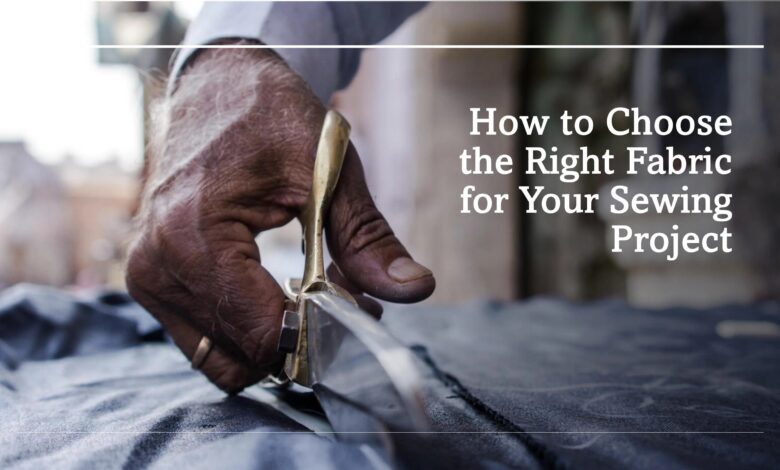How to Choose the Right Fabric for Your Sewing Project

The fabric you choose is one of the most crucial factors in ensuring your sewing project turns out well. Don’t risk your hard-earned money and time by selecting a fabric that doesn’t align with the purpose of your project. Start your next sewing project by matching a pattern with the correct or opposite fabric. Then, pick the print that best suits your new creation.
Durability
Considering how the fabric will be used – like a warm-weather dress or a durable tote bag – can help narrow your options. Testing a fabric’s performance by washing, ironing, stretching, or sewing a small sample piece is also essential. It will give you a feel for the fabric’s durability, comfort, and appearance.
Choosing the suitable fabric is essential for making any sewing project. The more you learn about different fabric properties, the easier it is to select fabrics to complete your assignments that appear perfectly every time. Browse our online fabric shop – find the perfect materials for your DIY projects. From lightweight chiffon to sturdy cotton, there are many beautiful fabrics. Thus, don’t be scared to experiment and try new things if you have the necessary abilities to work with those fabrics first!
Color
A quality piece of fabric is crucial for a successful sewing project. It’s essential to consider the fabric type and fiber content to get a smooth finish for the garment you’re working on. If you’re a beginner, we recommend choosing closely woven fabrics. It will make it easier to work with. Avoid knits and stretchy fabrics until you’re more experienced; they are tricky to work with. It’s also helpful to think about color value when selecting a fabric. It refers to how light or dark the material is. By pairing materials with different values, you can create forms and shapes that aren’t possible with solids alone. Experimenting with complementary colors like orange and blue can also give your garment a bright, eye-catching look.
Texture
Fabrics have a wide range of textures. Understanding how the different types feel and drape can help you envision what your result will look like, & also choose a sewing pattern that’s right for that type of texture. If you’re a beginner sewist, it’s best to stick with fabrics that are easy to work with. For example, a stretchy knit fabric could be challenging to work with, and it’s easier to make mistakes when working with it. Another tip is to read the fabric guidelines on the back of the pattern packet. Your decision may be significantly aided by the availability of a table that typically lists the fabric types that the fabric is appropriate for. Also, look at the fabric’s care instructions.
Weight
Choosing a suitable fabric is the most crucial step in any sewing project. After all, if you go to the trouble of investing in a sewing machine, a pattern, and some great fabrics, you want your finished garment to look good! Fabric weight is crucial in ensuring that your material suits your garment type. It’s a good idea to always check the fabric recommendations on the back of your pattern packet as a starting point. Fabric weight is also significant when shopping online – it’s sometimes listed in gm or oz, which is handy if you need to compare fabrics from different brands.
Breathability
Breathability is an important factor when choosing fabric for clothing or other projects. It helps to ensure optimal comfort by preventing overheating and providing a relaxed, soft feel against the skin. Materials with good breathability include cotton, silk, and wool (natural fibers) or viscose and rayon (manufactured fabrics). However, it is essential to note that some synthetic materials may irritate the skin. The best way to learn about different fabric types is by working on various projects with each one. Take your time to learn all you can about the material you use for each project, and take notes. You will eventually be able to make the perfect choice for each project you sew! Your next task will succeed when you use the correct type of fabric.



